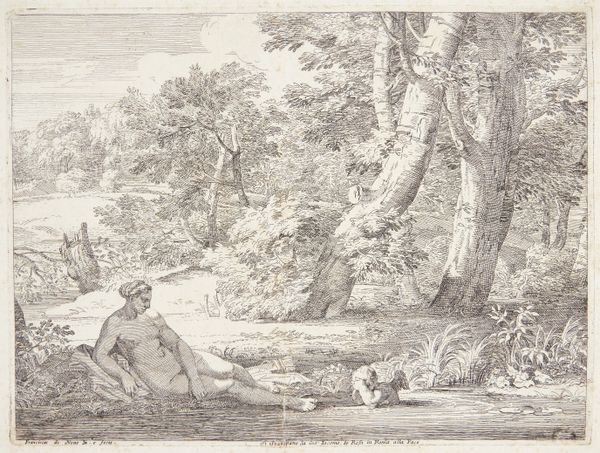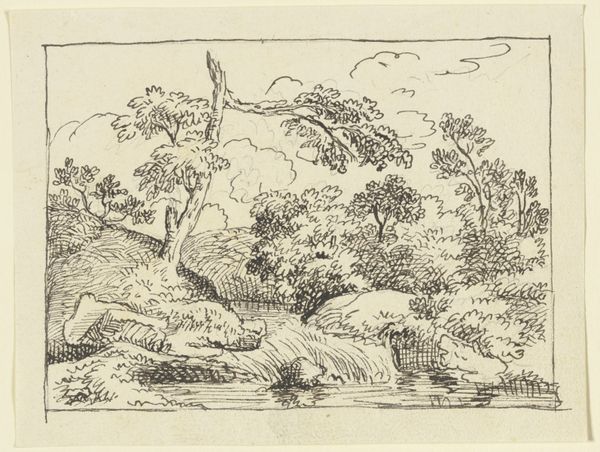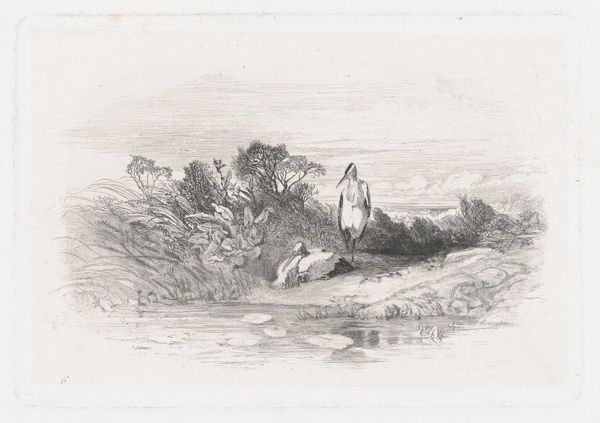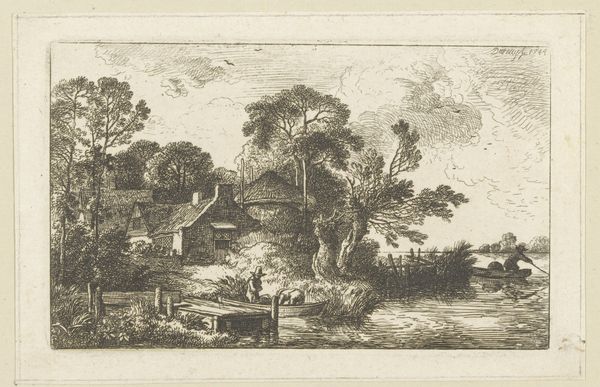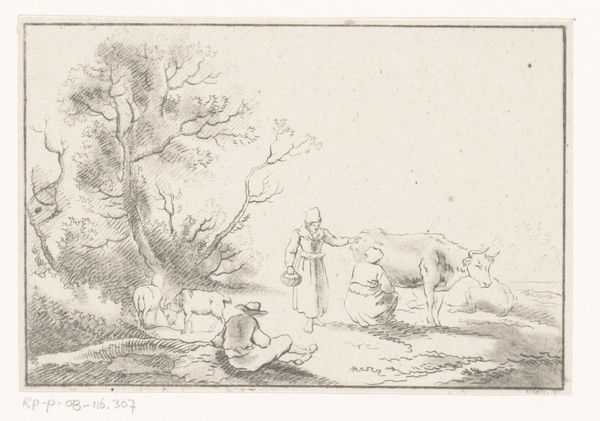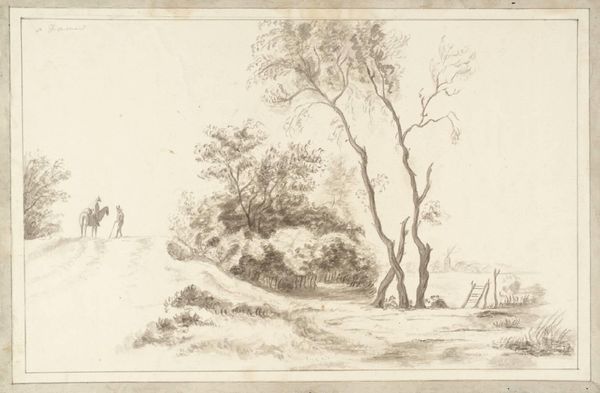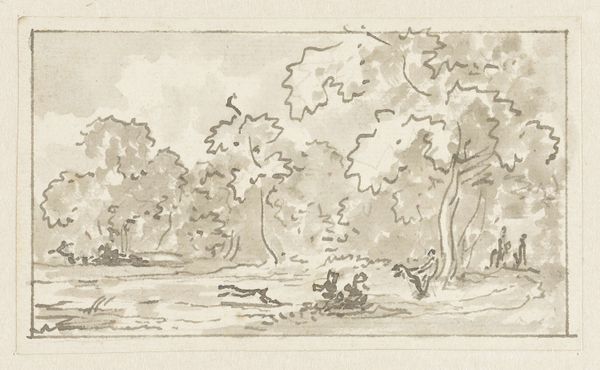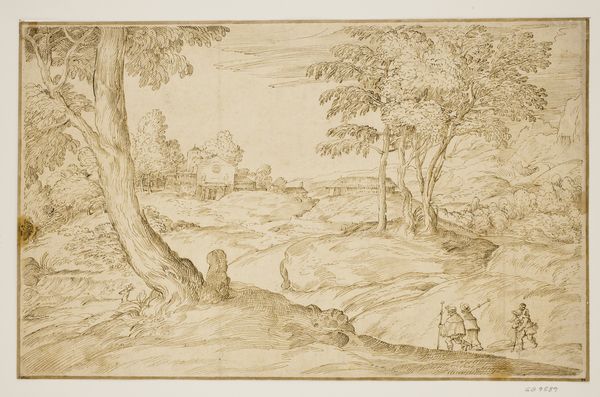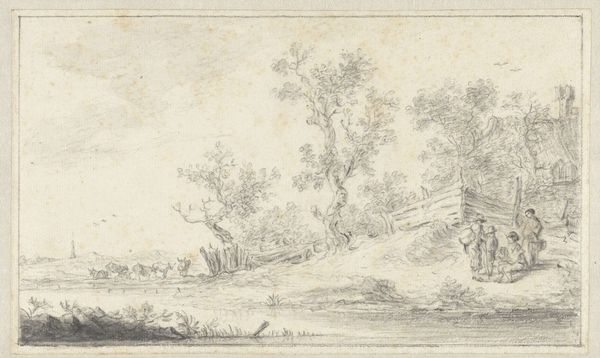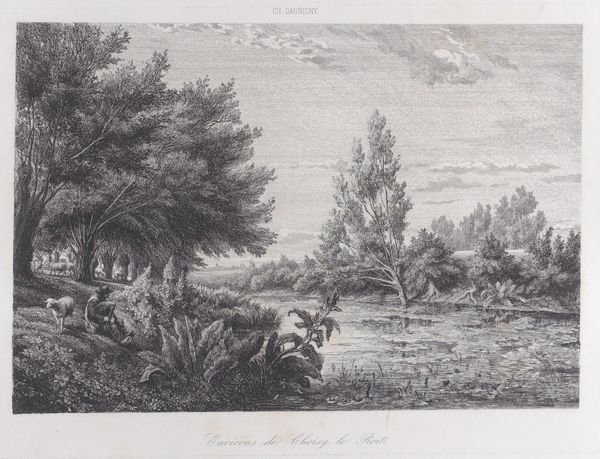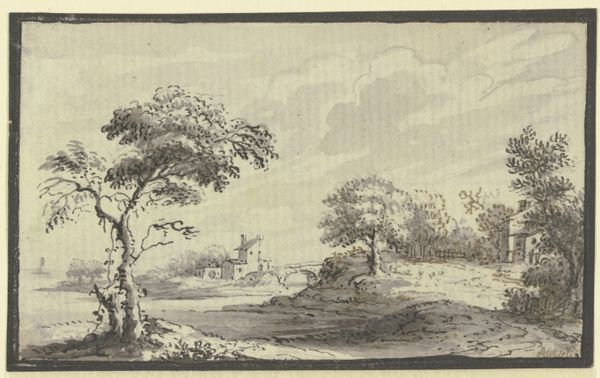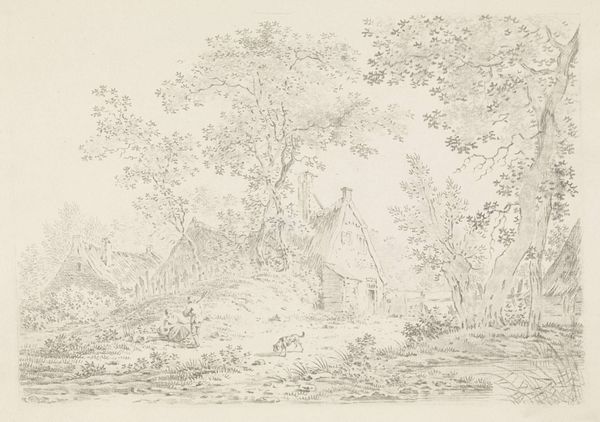
Illustration til "Halvhundrede Fabler for Børn" af Hey 1834
0:00
0:00
drawing, print, paper, ink, engraving
#
drawing
#
narrative-art
# print
#
landscape
#
paper
#
ink
#
genre-painting
#
engraving
Dimensions: 105 mm (height) x 134 mm (width) (bladmaal)
Editor: Here we have Martinus Rørbye's "Illustration til 'Halvhundrede Fabler for Børn' af Hey," created in 1834 using ink and engraving on paper. It depicts a young boy fishing, with incredibly fine details in the landscape and the water. The scene evokes a sense of peaceful stillness. How do you interpret the composition of this seemingly simple illustration? Curator: Indeed, the apparent simplicity belies a sophisticated arrangement. Note how the artist employs a limited palette of sepia tones to create a cohesive visual field. The contrast between the textured landscape and the relatively smooth surface of the water introduces a visual rhythm. How do you see this interplay function within the overall design? Editor: It directs my gaze! The reeds and detailed foliage on either side act as framing devices, pulling my eyes towards the central figure and the reflective surface of the pond. The line of the fishing rod itself further emphasizes that focal point. Curator: Precisely. The artist skillfully uses line to lead the viewer's eye and organize the visual space. Also, consider how the boy’s posture creates a stable, triangular form, anchoring the composition. Where does your eye go after noticing this anchor? Editor: To the fish, probably. There are clearly a couple of live fish in the water in front of the boy, perhaps implying something about what the artist, or even the fable itself, intends for the child to realize. The level of detail given to the plants is echoed in the boy's hat, so perhaps there's some connection or contrast there. I wonder why those details? Curator: Rørbye masterfully utilizes contrasts to enhance visual interest. The geometric regularity of the mill in the background juxtaposes with the wild and chaotic landscape. This establishes a certain tension, wouldn’t you agree? This interplay provides visual interest within the confines of a somewhat academic illustration. Editor: I now notice the intentional tension, giving the artwork an intriguing dynamic. Curator: It is an example of how attention to formal elements reveals complex meanings and visual relationships, which elevates simple illustration to art.
Comments
No comments
Be the first to comment and join the conversation on the ultimate creative platform.
